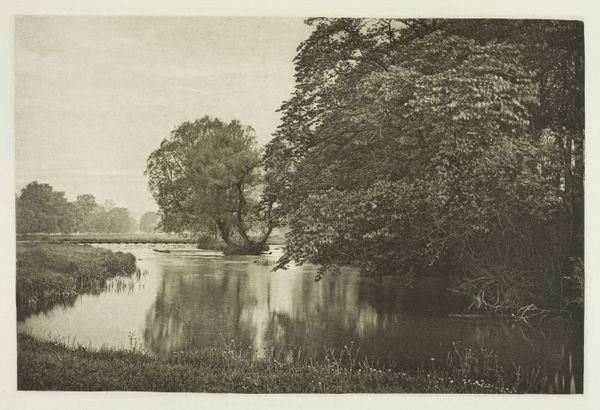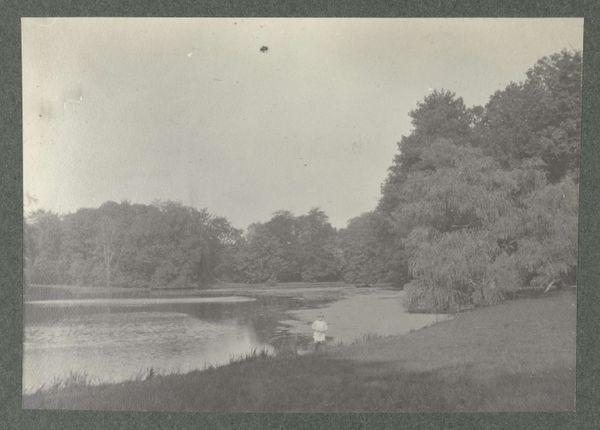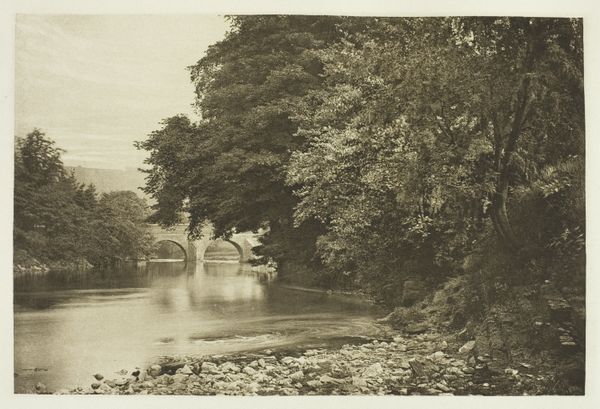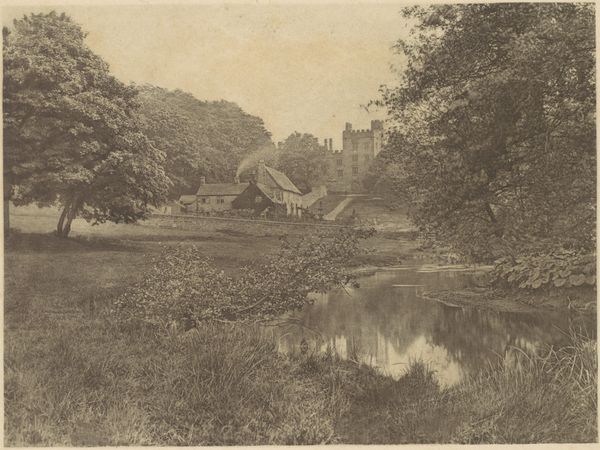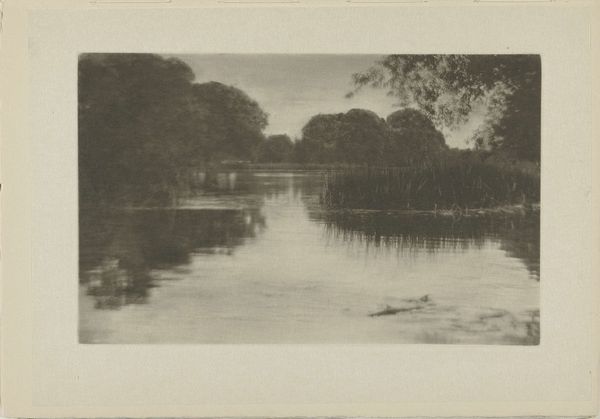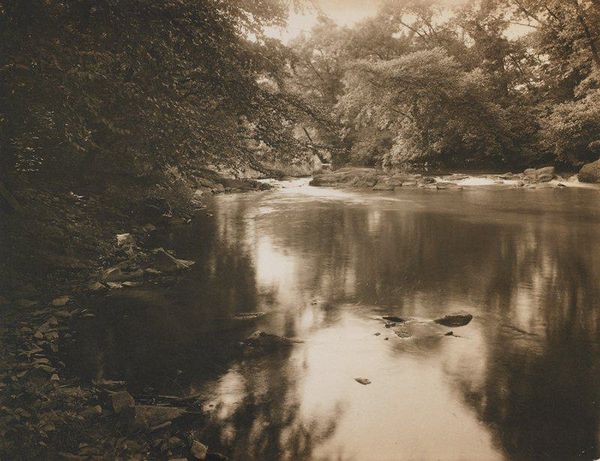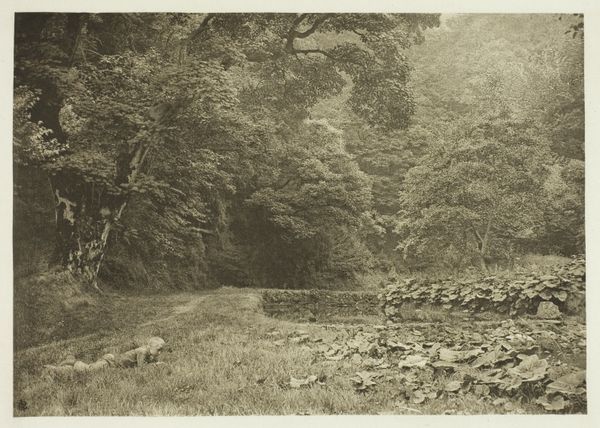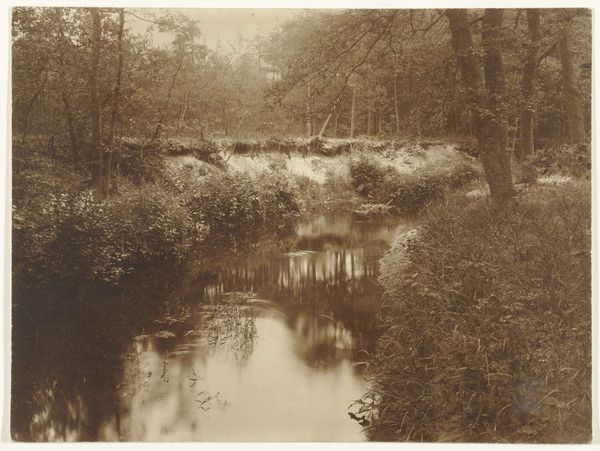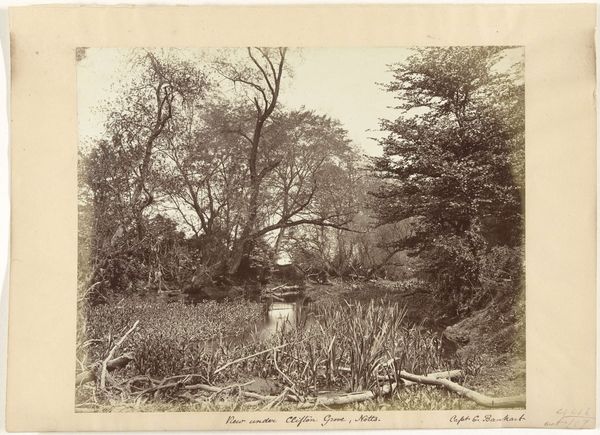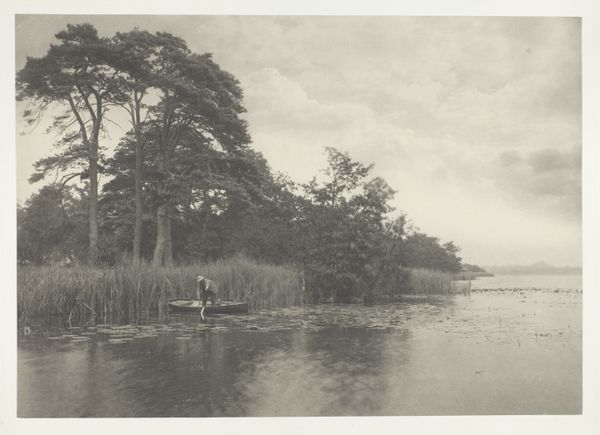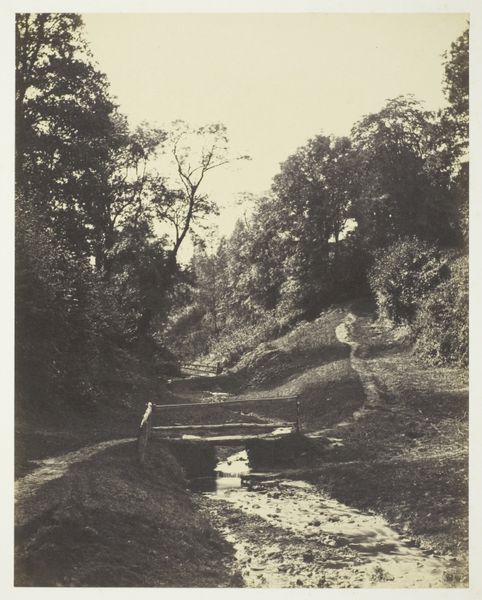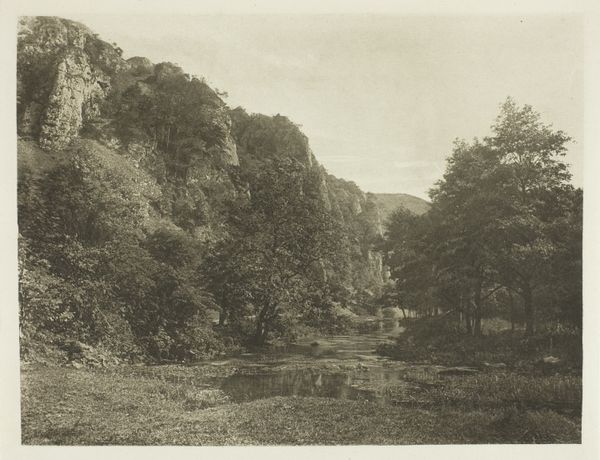
Dimensions: 12 × 20.4 cm (image); 15.4 × 22.7 cm (paper); 24.6 × 31.7 cm (album page)
Copyright: Public Domain
Curator: This is Peter Henry Emerson's photograph, "Haddon Hall, From the Meadows," a gelatin-silver print from around the 1880s. What strikes you most when you first see it? Editor: Immediately, it’s the stillness. The monochrome palette amplifies the sense of tranquility; there’s a weight, an almost mythic presence about the hall in the background. Curator: I think Emerson is consciously engaging with romantic landscape traditions here, while also pushing boundaries in terms of photographic technique and artistic intent. Consider, for example, how this estate operates within the socio-political fabric of Victorian England—what statements do you think Emerson might be trying to make with this piece? Editor: Perhaps Emerson is speaking to England's evolving class structures; the landed gentry maintaining power, even while the rising tide of industrialisation reshaped the national psyche. But if you look at Haddon Hall, with its sturdy, almost fairytale-like towers and strong windows – those are symbols of endurance, hinting at timelessness, no? The meadows themselves speak to an older pastoral ideal. Curator: Exactly! We cannot detach this landscape from its historical reality; English manorialism played a powerful role in shaping the lived experiences of people on every level of society. Furthermore, one of Emerson's main contributions was to assert photography as fine art, distinct from mere documentation. How might "Haddon Hall" represent this approach? Editor: Certainly. His focus isn’t strictly documentary; there is an intention to evoke an emotion. Consider how the soft focus and tonal gradations in the water and meadows draw the viewer into a more impressionistic engagement with the scene. It transcends mere topographic rendering. The hall feels timeless and the symbols he uses carry deep meaning about this society and place. Curator: Yes. So Emerson blurs the line between objective representation and subjective artistic expression. Considering the work through a lens of class dynamics and representational aesthetics is essential to understanding its full historical significance and purpose. Editor: Ultimately, Emerson manages to infuse this place, and its time, with symbolic power, beyond the straightforward presentation of landscape alone. It speaks on multiple levels. Curator: Agreed. It shows the necessity of unpacking layers of history and artistic expression within a single image. Editor: And reminds us how a scene holds timeless symbols.
Comments
No comments
Be the first to comment and join the conversation on the ultimate creative platform.
